I don't pretend to be an expert on Chinese history, far from it. I write this article for myself trying to get some understanding on what happened in China during the first half of the last century. The Military Museum is just a starting point.
Now we need some background. After the toppling of the the last imperial dynasty Qing Dynasty (also kown as Manchu dynasty) in 1911 China had a period of instability, civil unrest and foreign invasions. Nice overview here.
After the fall of Qing, until 1928 the country was divided between military cliques, or warlords.. There were many revolutionary groups, but the most organised was the one led by Sun Yat-sen (孫逸仙). Sun became a unifying figure for whole of China and he is now revered in both Chinas, the People's Republic of China (中国, Zhōngguó or simply mainland China, 大陸) and in the Republic of China (abbreviation: R.O.C., Chinese: 中華民國, pinyin: Zhōnghuá Mínguó or simply: Taiwan, 台灣).
Sun Yat-sen became the first provisional president of the new Republic of China in 1912 but at the same time general Yuan Shikai took the control of the most powerful military force in the North of China, the so called Beiyang army, and Sun had to make a deal with him. In fact Yuan Shikai became something like a dictator that overrun the powers of new parliament, where Sun's Kuomintang party had majority of seats. Animosity between Yuan Shikai and Kuomintang party grew and turned into violence. Sun had to flee to Japan in October 1913. The intimidated parliament elected Yuan Shikai as new president and the major foreign powers recognised his government. He had to pay for it, especially to Russia and Britain, in the form of special privileges those countries got in Outer Mongolia and Tibet. Yuan purged Kuomintang members from the parliament (they were majority) and the parliament became ineffective. Yuan wanted to restore monarchy. In December 1915 he proclaimed himself Emperor of the Empire of China (中華帝國, Zhōnghuá Dìguó). He took era name Hongxian (洪憲). His empire was short lived.
In 1925 Kuomintang established a rival government in the South of China, but it was militarily much weaker than the warlords in the North. This is why Sun Yat-sen founded a military school at Whampoa (Huangpu). The money for the building of the Academy came from Soviet Union. The Soviets also provided teachers and methods. Kuomintang leaders as well as leaders of the Communist red army studied in this school. Later on they fought against each other in the Chinese Civil War that lasted more than 20 year until 1950.
The first exhibition room of the Armed Forces Museum introduces the "glorious deeds of the Whampoa Military Academy from 1924 to 1928. I understand that this museum has a propagandistic purpose. Therefore, I couldn't see any mention of some important details like the fact that Soviet Union was taking care of the financing of the Military Academy and the teaching and the fact that many communist leaders were involved in the leadership of the school.
Sun's favorite and rising star Chiang Kai-shek (蔣中正 or 蔣介石) was appointed the first commandant of the academy. Communist leader Zhou Enlai was the director of the political department. He became the first prime minister of the People's Republic of China.
This is Dr. Sun (sitting) and Chiang Kai-shek (standing behind Sun).
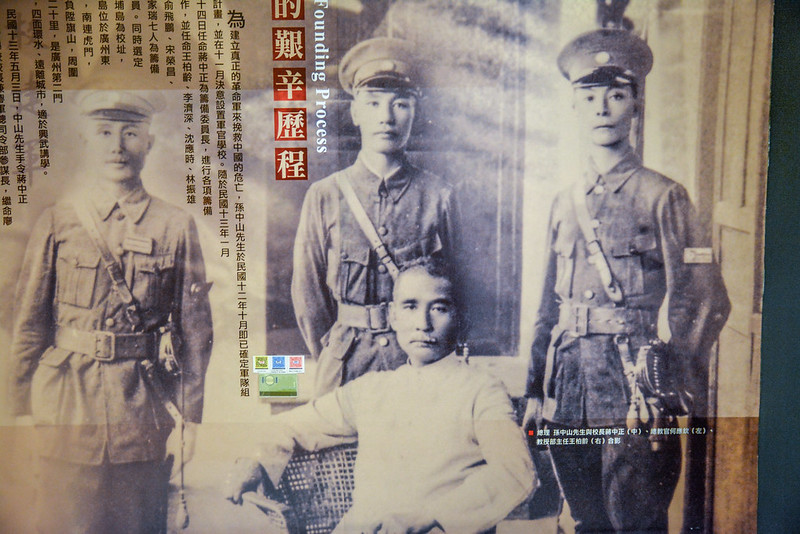
Chiag Kai-shek's Whampoa sword, also called the Whampoa Dagger or Martyr's Dagger. It was given to the servicemen to boost their "revolutionary spirit and self scrifice. Chiang often carried this dagger. You can buy one at ebay for less than 200 US dollars. Probably not authentic, tho.
Don Esaias with the Whampoa Dagger
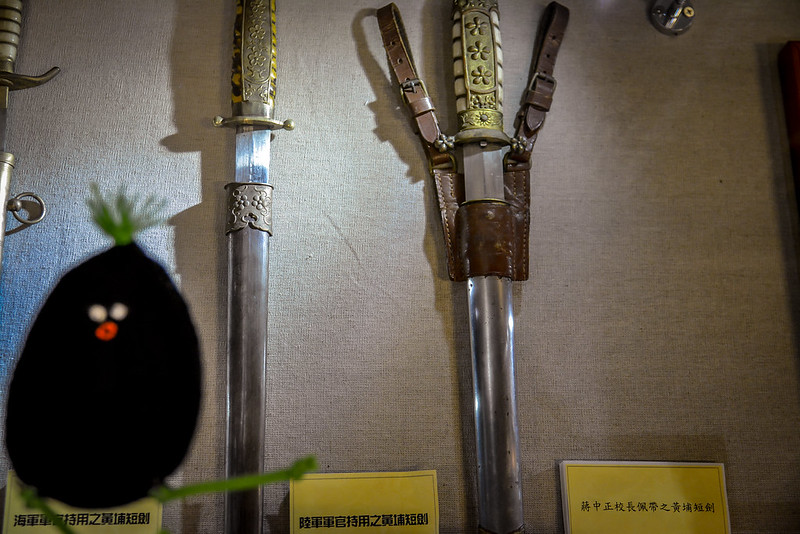
The flag of the Commander-in-chief, Chiang Kai-shek.
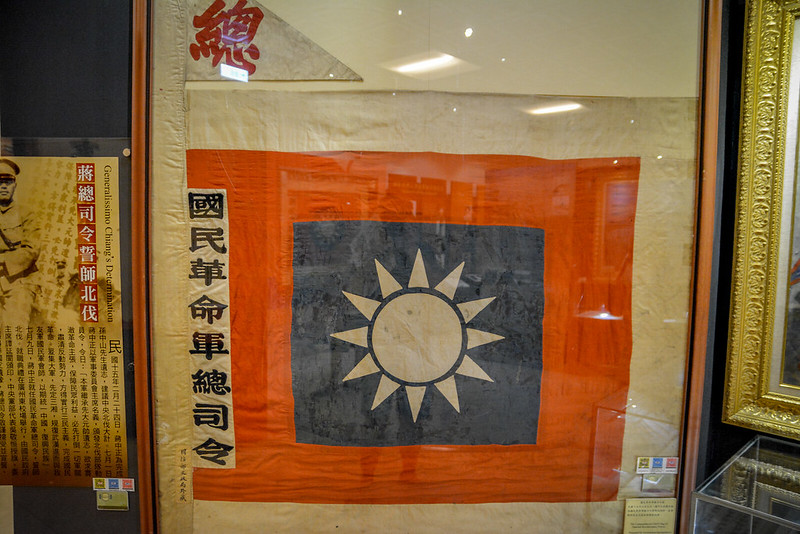
The commander's saber of Chiang Kai-shek. He carried it during the Northern expedition. It symbolises that the "nation has conferred commanding power" to the one who carry it.
Don Esaias with the commander's saber

The battle of Ding si bridge during the Northern expedition.
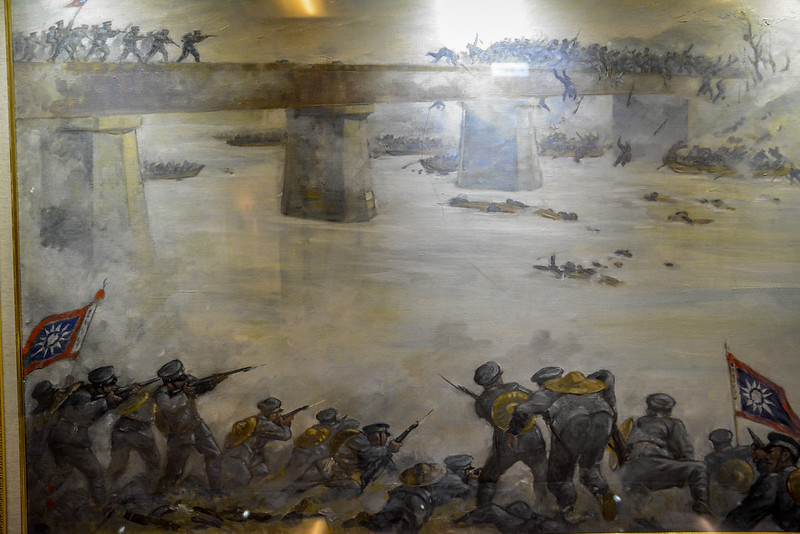
The medal of the "Blue Sky and White Sun", awarded to Chiang Kai-shek after the successful Northern expedition and unification of China.
Don Esaias with Blue Sky and White Sun
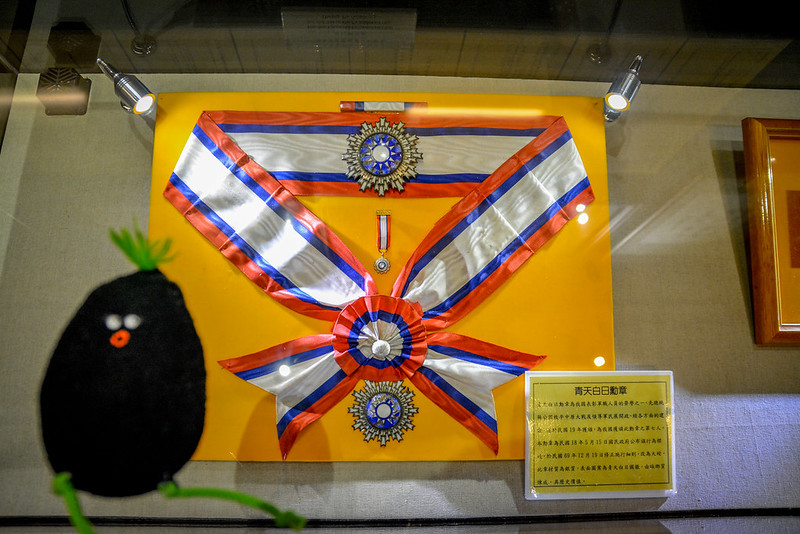
The NRA had three main engagements. The first one was so called Northern Expedition from 1926 to 1928. Its objective was to rule China by toppling the Beyang government (internationally recognised and supported by Japan) that ruled the Northern China from Beijing. Beyang government was based on the imperial army of Qing Dynasty. The two other main engagements were the Second Sino-Japanese War against the Imperial Japanese Army and the Chinese Civil War against the People's Liberation Army.
Interesting thing is that as soon as I published this article, there was a visitor from United States. Obama want to check my blog! I feel flattered. : ) Military terminology attract him.
To be continued soon.....
Should be a museum tourists stop at and learn more
ReplyDeleteExcellent article, I have a similar saber that I bought from E-bay 10 years a ago.
ReplyDelete